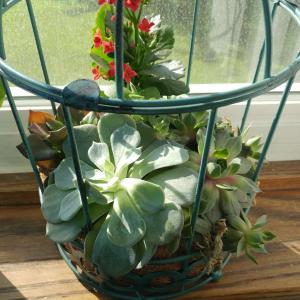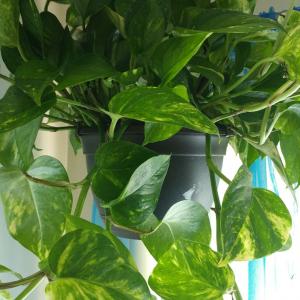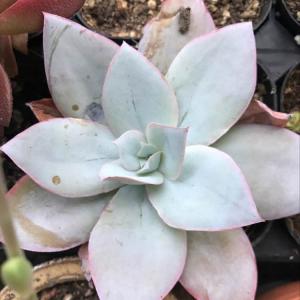文章
粉团
2017年05月22日

Aspirin tablets can be used for growing healthy and productive plants, and it really WORKS. Here’re some of the best ASPIRIN uses in the garden!
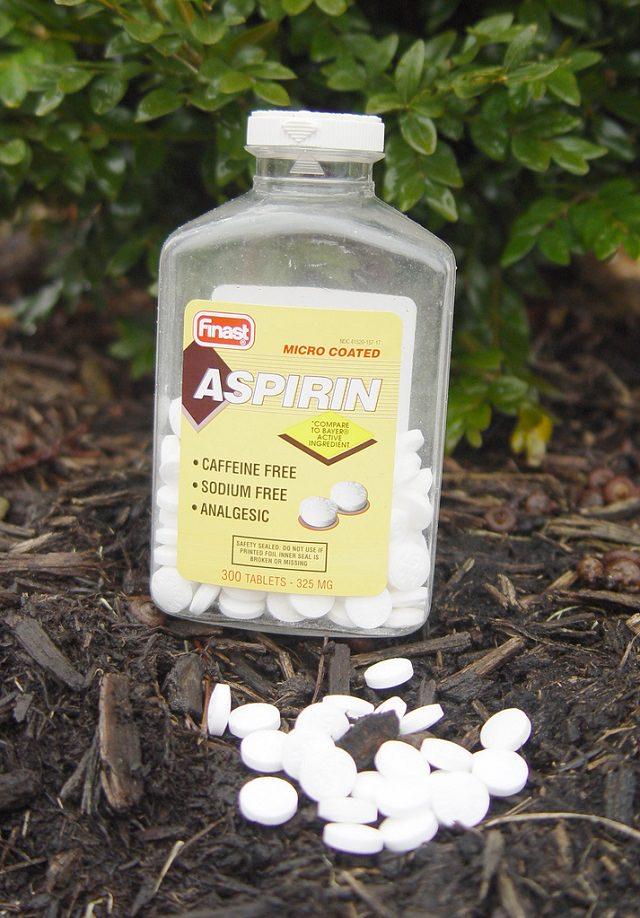
1. Increases the growth and productivity of plants
At the University of Rhode Island, gardeners made a solution containing 4 crushed aspirin tablets and 4 gallons of water and then sprayed the solution on their vegetable gardens every three weeks throughout the growing season. At the end of the season, they found that the treated plants grew more quickly and were more fruitful than the group that was left untreated.
They concluded that aspirin leads to increased vitamin C content and greater growth in plants.The science behind this claim
Aspirin contains an active ingredient known as salicylic acid. It is derived from willow bark. This acid enhances the immune system of plants (Plants prepare it naturally but in lower amounts) especially those in the nightshade family. Plants subjected to it get the boost in immunity power, which helps them in combating with pests and microbial attack and prevents the formation of fungus leading to increased growth rate of plants. Visit the New Scientist to learn more about this in detail.
2. It helps plants combating fungal diseases

Verticillium and fusarium wilt are common fungal diseases widely distributed in soil and can wipe out an entire crop in a matter of days. Fortunately, according to a recent study by the US Department of Agriculture, the use of aspirin spray can significantly reduce the spread of fungus on the plant. It is also helpful in blight. Visit the Dailymail to learn to learn how Aspirin helps tomatoes!
The science behind this claim
Apparently, plants produce small amounts of salicylic acid naturally especially when they are stressed. The salicylic acid creates a systematically acquired resistance protecting the plants against microbial attack, drought, and even insect attack. Since salicylic acid is the active ingredient in aspirin, when a solution of aspirin is sprayed on the plants, the amount of salicylic acid in the plants is increased which in turn boosts their immune system protecting the seedlings and plants from soil-borne diseases, bacteria, and fungi.
Gardeners can spray their plants with a solution of aspirin tablet mixed in distilled water. The drug is especially effective in warding off diseases in the nightshade family which include tomatoes or potatoes. You can also soak the seeds in the aspirin solution just before sowing to improve germination.
3. Help cut plants and flowers to last longer

Are you wondering how you can keep your cut flowers looking fresh for a long time? It is possible by adding aspirin to the vase water. To achieve this, crush an aspirin tablet, dissolve it in water and add the solution to a vase. Visit Lifehacker to learn more!
The science behind this claim
According to Judy Jernstedt, the professor in plant and soil department at the University of California, Davis, the salicylic acid reduces the production of ethylene. With reduced ethylene present, floral wilting is delayed, and the cut plants can last longer.
Also, the anti-fungal properties of salicylic acid that dissolve into the vase water slows down the growth of mold which if it enters the flower stem can clog the vascular tissue leading to the death of the flower. For longer lasting fresh flowers, be sure to change the water regularly.
4. Propagate plants from cuttings successfully
Rooting hormone helps in propagating plants from cuttings and using it improves the success rate. Take a cup of distilled water and dissolve one uncoated aspirin tablet and then keep the cut end of the plant in this rooting solution for a few hours before planting. It’ll work!
The science behind this claim
Instead of using willow bark, which contains growth hormones, you can use aspirin to prepare your own rooting solution. It contains the same salicylic acid that is found in willows and works the same.
How to Use Aspirin in the Garden
You should be careful when using aspirin in the garden as too much can burn or damage the plants. Improper use may lead to the development of brown spots that makes them appear to have burnt foliage. This guide on how to properly use aspirin in the garden can help prevent any damage to the plants.
The Right Dosage
The right dosage of aspirin should not be more than a tablet for each liter of water. Begin by crushing the tablet and ensure it is well dissolved before spraying. *It has been observed by gardeners that aspirin dissolves well in distilled water!
When spraying, do it in the morning as plants tend to absorb best at this time. Also, spraying in the morning helps to avoid harming the beneficial insects such as bees and other pollinators, which are active later and it gives the plants a chance to dry too.
You should also pay attention to the response of the plants to the treatment as not all plants are suitable for aspirin treatment. Plants in the nightshade family, of course, such as tomatoes, peppers, potatoes and eggplants benefit greatly from aspirin regimen.

1. Increases the growth and productivity of plants
At the University of Rhode Island, gardeners made a solution containing 4 crushed aspirin tablets and 4 gallons of water and then sprayed the solution on their vegetable gardens every three weeks throughout the growing season. At the end of the season, they found that the treated plants grew more quickly and were more fruitful than the group that was left untreated.
They concluded that aspirin leads to increased vitamin C content and greater growth in plants.The science behind this claim
Aspirin contains an active ingredient known as salicylic acid. It is derived from willow bark. This acid enhances the immune system of plants (Plants prepare it naturally but in lower amounts) especially those in the nightshade family. Plants subjected to it get the boost in immunity power, which helps them in combating with pests and microbial attack and prevents the formation of fungus leading to increased growth rate of plants. Visit the New Scientist to learn more about this in detail.
2. It helps plants combating fungal diseases

Verticillium and fusarium wilt are common fungal diseases widely distributed in soil and can wipe out an entire crop in a matter of days. Fortunately, according to a recent study by the US Department of Agriculture, the use of aspirin spray can significantly reduce the spread of fungus on the plant. It is also helpful in blight. Visit the Dailymail to learn to learn how Aspirin helps tomatoes!
The science behind this claim
Apparently, plants produce small amounts of salicylic acid naturally especially when they are stressed. The salicylic acid creates a systematically acquired resistance protecting the plants against microbial attack, drought, and even insect attack. Since salicylic acid is the active ingredient in aspirin, when a solution of aspirin is sprayed on the plants, the amount of salicylic acid in the plants is increased which in turn boosts their immune system protecting the seedlings and plants from soil-borne diseases, bacteria, and fungi.
Gardeners can spray their plants with a solution of aspirin tablet mixed in distilled water. The drug is especially effective in warding off diseases in the nightshade family which include tomatoes or potatoes. You can also soak the seeds in the aspirin solution just before sowing to improve germination.
3. Help cut plants and flowers to last longer

Are you wondering how you can keep your cut flowers looking fresh for a long time? It is possible by adding aspirin to the vase water. To achieve this, crush an aspirin tablet, dissolve it in water and add the solution to a vase. Visit Lifehacker to learn more!
The science behind this claim
According to Judy Jernstedt, the professor in plant and soil department at the University of California, Davis, the salicylic acid reduces the production of ethylene. With reduced ethylene present, floral wilting is delayed, and the cut plants can last longer.
Also, the anti-fungal properties of salicylic acid that dissolve into the vase water slows down the growth of mold which if it enters the flower stem can clog the vascular tissue leading to the death of the flower. For longer lasting fresh flowers, be sure to change the water regularly.
4. Propagate plants from cuttings successfully
Rooting hormone helps in propagating plants from cuttings and using it improves the success rate. Take a cup of distilled water and dissolve one uncoated aspirin tablet and then keep the cut end of the plant in this rooting solution for a few hours before planting. It’ll work!
The science behind this claim
Instead of using willow bark, which contains growth hormones, you can use aspirin to prepare your own rooting solution. It contains the same salicylic acid that is found in willows and works the same.
How to Use Aspirin in the Garden
You should be careful when using aspirin in the garden as too much can burn or damage the plants. Improper use may lead to the development of brown spots that makes them appear to have burnt foliage. This guide on how to properly use aspirin in the garden can help prevent any damage to the plants.
The Right Dosage
The right dosage of aspirin should not be more than a tablet for each liter of water. Begin by crushing the tablet and ensure it is well dissolved before spraying. *It has been observed by gardeners that aspirin dissolves well in distilled water!
When spraying, do it in the morning as plants tend to absorb best at this time. Also, spraying in the morning helps to avoid harming the beneficial insects such as bees and other pollinators, which are active later and it gives the plants a chance to dry too.
You should also pay attention to the response of the plants to the treatment as not all plants are suitable for aspirin treatment. Plants in the nightshade family, of course, such as tomatoes, peppers, potatoes and eggplants benefit greatly from aspirin regimen.
2
0
文章
Alicia
2017年05月22日

These 7 vegetable gardening tips on companion planting, intercropping and crop rotation will improve the productivity of your garden.
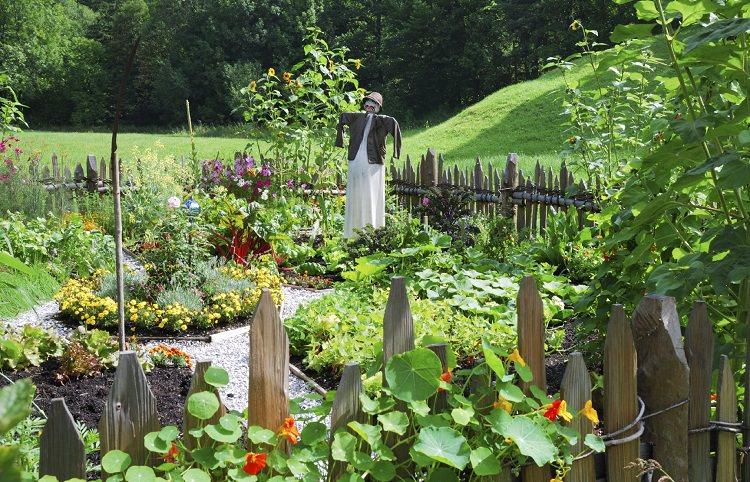
1) Do Crop Rotation: Avoid planting the plants of the same family at similar site each year
It is a good practice, avoid planting the plants of the same family at the same site continuously. Usually, the plants from similar family have common pest and disease problems, they also draw the same nutrition from the soil again and again. A useful and informative article on this issue that you must read for more information is available on the Harvest to Table.
2) Consider the Depth of Roots: Grow shallow root plants with deep root plants
Combine vegetables that have different root development. Those with shallow roots (lettuces) are best planted with those that root deeply (tomatoes). It allows them to “catch” the nutrients at different depths and this will prevent their competition for nutrients at the root zone.
3) Interplanting: Plant fast growing species with slow growing species
Cultivate the fast growing smaller crop at the same time with the large vegetable plants that take time. This will give all the space and time to both the species to develop well until harvest without damaging the other. For example, you can grow radishes with carrots, radishes mature early and harvested first, thus making more space for carrots to grow.
4) Grow legumes: Planting legumes fix the nitrogen in soil
Although there are vegetables that poorly tolerate their presence, it is always advisable to grow legumes in crop rotation. The reason is obvious: the plants (peas, beans, clover etc.) belong to this family have the ability to fix nitrogen. Thanks to the action of nitrogen-fixing bacteria that live in symbiosis with their roots.
5) Companion planting: Grow pest repellent plants
Plants from allium family such as garlic, leek and onion. Herbs like lavender, oregano, lemon balm, holy basil and flowers like nasturtiums and marigold are great pest repellents. These plants can be tucked here and there in your vegetable garden bed to deter some harmful insects and pests. For example, if nematodes are the problem in your soil, plant marigolds. Marigold roots consist thiophene that repels nematodes. Vegetables like potatoes and tomatoes usually suffer from them, in such a case you can plant marigold at the same site for a couple of months before planting these crops. For more information about marigold and its repellent properties read this educative article of the University of Florida.
6) Avoid plants that have high nutritional requirements: Don’t grow vegetables together that require higher amount of nutrition
Avoid the cultivation of plants that require a high consumption of nutrients (especially nitrogen) together. Grow them with plants that are less demanding and have low nutritional requirements. However, there is an exception to this rule, plants that have the same nutrition and watering needs must be grown together.
7) Disparity in size: Maintain balance in the size of the plants
Another element to be considered in the choice is the size of the vegetables you’re growing together. Plants that grow much in volume or in height (as in the case of cucumber, vertically) can shade smaller plants and disturb their growth. Conversely, this disparity in size can be best used if you grow such plants that thrive well in a little shade under tall, spreading plants.

1) Do Crop Rotation: Avoid planting the plants of the same family at similar site each year
It is a good practice, avoid planting the plants of the same family at the same site continuously. Usually, the plants from similar family have common pest and disease problems, they also draw the same nutrition from the soil again and again. A useful and informative article on this issue that you must read for more information is available on the Harvest to Table.
2) Consider the Depth of Roots: Grow shallow root plants with deep root plants
Combine vegetables that have different root development. Those with shallow roots (lettuces) are best planted with those that root deeply (tomatoes). It allows them to “catch” the nutrients at different depths and this will prevent their competition for nutrients at the root zone.
3) Interplanting: Plant fast growing species with slow growing species
Cultivate the fast growing smaller crop at the same time with the large vegetable plants that take time. This will give all the space and time to both the species to develop well until harvest without damaging the other. For example, you can grow radishes with carrots, radishes mature early and harvested first, thus making more space for carrots to grow.
4) Grow legumes: Planting legumes fix the nitrogen in soil
Although there are vegetables that poorly tolerate their presence, it is always advisable to grow legumes in crop rotation. The reason is obvious: the plants (peas, beans, clover etc.) belong to this family have the ability to fix nitrogen. Thanks to the action of nitrogen-fixing bacteria that live in symbiosis with their roots.
5) Companion planting: Grow pest repellent plants
Plants from allium family such as garlic, leek and onion. Herbs like lavender, oregano, lemon balm, holy basil and flowers like nasturtiums and marigold are great pest repellents. These plants can be tucked here and there in your vegetable garden bed to deter some harmful insects and pests. For example, if nematodes are the problem in your soil, plant marigolds. Marigold roots consist thiophene that repels nematodes. Vegetables like potatoes and tomatoes usually suffer from them, in such a case you can plant marigold at the same site for a couple of months before planting these crops. For more information about marigold and its repellent properties read this educative article of the University of Florida.
6) Avoid plants that have high nutritional requirements: Don’t grow vegetables together that require higher amount of nutrition
Avoid the cultivation of plants that require a high consumption of nutrients (especially nitrogen) together. Grow them with plants that are less demanding and have low nutritional requirements. However, there is an exception to this rule, plants that have the same nutrition and watering needs must be grown together.
7) Disparity in size: Maintain balance in the size of the plants
Another element to be considered in the choice is the size of the vegetables you’re growing together. Plants that grow much in volume or in height (as in the case of cucumber, vertically) can shade smaller plants and disturb their growth. Conversely, this disparity in size can be best used if you grow such plants that thrive well in a little shade under tall, spreading plants.
4
2
文章
stone
2017年05月22日
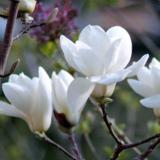
#仙客来 又名萝卜海棠。花形奇特,花色丰富,花期较长。养好仙客来需要注意用土、夏季养护、浇水、施肥及防治病虫害等方面。
(1)仙客来喜排水良好、疏松而富含腐殖质的沙壤土。忌土壤黏重和碱性土。盆栽宜用腐叶土或泥炭土、园士各4份,堆肥土、沙土各1份混匀配制,并在盆底放少量骨粉作基肥。小苗栽植深度以顶部微露出土面,成苗茎顶部露出土面约1/3,老块茎露出土面1/2为宜。
(2)喜光怕热。光照充足对其生长发育有利,但怕夏季强光直射。当夏季气温超过30℃时即进入休眠状态,若此时养护不当,块茎易腐烂,因此宜采取遮光降温措施。
(3)喜湿润,但怕涝。生长发育期间浇水要“见干见湿”,保持盆土湿润为宜。平时一般1~2天浇一次水。若浇水过多,块茎易腐烂,尤其是上盆初期要注意少浇水,以防烂球。但浇水过少,会导致叶片萎蔫。

(4)忌施浓肥和生肥。否则易“烧根”,以簿肥勤施为宜。生长期间一般每10天左右施一次。夏季暂停施肥,9月以后生长渐旺,宜每天早上浇一次水,同时每隔10天左右施一次稀薄腐熟豆饼水;10月以后适当多施磷肥,促进花芽分化。施液肥时不要溅到顶芽上,以免造成腐烂,也要避免弄脏叶片,否则也易引起腐烂。开花期间应暂停施肥,浇水不可忽多忽少,若过多易落蕾或使盛开的花朵早谢。
(5)较耐低温。北方10月中旬入室后放室内窗台附近阳光充足处,室温保持在15℃以上。如室内光照不足,温度低于10℃,花芽分化受到抑制,导致花小而少,花期也会向后推迟。
(1)仙客来喜排水良好、疏松而富含腐殖质的沙壤土。忌土壤黏重和碱性土。盆栽宜用腐叶土或泥炭土、园士各4份,堆肥土、沙土各1份混匀配制,并在盆底放少量骨粉作基肥。小苗栽植深度以顶部微露出土面,成苗茎顶部露出土面约1/3,老块茎露出土面1/2为宜。
(2)喜光怕热。光照充足对其生长发育有利,但怕夏季强光直射。当夏季气温超过30℃时即进入休眠状态,若此时养护不当,块茎易腐烂,因此宜采取遮光降温措施。
(3)喜湿润,但怕涝。生长发育期间浇水要“见干见湿”,保持盆土湿润为宜。平时一般1~2天浇一次水。若浇水过多,块茎易腐烂,尤其是上盆初期要注意少浇水,以防烂球。但浇水过少,会导致叶片萎蔫。

(4)忌施浓肥和生肥。否则易“烧根”,以簿肥勤施为宜。生长期间一般每10天左右施一次。夏季暂停施肥,9月以后生长渐旺,宜每天早上浇一次水,同时每隔10天左右施一次稀薄腐熟豆饼水;10月以后适当多施磷肥,促进花芽分化。施液肥时不要溅到顶芽上,以免造成腐烂,也要避免弄脏叶片,否则也易引起腐烂。开花期间应暂停施肥,浇水不可忽多忽少,若过多易落蕾或使盛开的花朵早谢。
(5)较耐低温。北方10月中旬入室后放室内窗台附近阳光充足处,室温保持在15℃以上。如室内光照不足,温度低于10℃,花芽分化受到抑制,导致花小而少,花期也会向后推迟。
0
0
文章
stone
2017年05月22日

#徒长花 友们都不陌生,本文讲述的是酢浆草徒长怎么办,本文根据花友的实践总结了5种应对酢浆草徒长的方法,希望能对花友有所帮助!
1、补光法
既然说了徒长是因为光照不足的因素引起的,所以,补光是最关键的因素,当然,在补光的同时必须注意两个方面。
1)浇水,潮而不湿为原则,浇水太多容易徒长也容易烂球。
2)温度,30度左右甚至30度以上,不要直晒,会挂掉,会焦掉。
2、填土法。
这是比较普及也比较常用的一种方式,把徒长的枝条用土或者铺面填埋起来,保证土面以上的植株部分看起来更精神,如果徒长的部分已经很长,可以把枝条盘曲在花盆里做填土工作,当然需要注意的是手势要轻柔,不然很容易折断枝干。

3、剃头法。
顾名思义就是打顶了,大部分酢可以打顶修剪,修剪不是必须的操作,但完全可以当做补救徒货的方式之一,打顶可以促分枝,剪下的枝条还能扦插,是控制株型的好方法。用这个方式拯救徒货的同时,需要注意两个问题。
1)扦插的枝条会生根开花,但是不一定会生球。
2)剃头的植株可能会错过花期,花量稀少甚至当年不开花。
4、垂吊法。
把花盆搁置在略高的位置,让它徒去吧!徒着徒着就自然垂吊了,这种方式特别适合株型很高很容易失控的品种。比如:高个,黄麻子,大饼脸,长发酢,小橘饼等。
5、支架法,其实支架法也分两大类。
一是支撑式支架,就是笔直哒,或者一个圈型哒,以起到把植株徒长倒伏部分固定向上的作用。
二就是花式支架,可以让徒货攀缘在支架上生长。
这里就重点介绍一下第二种吧,我用2.0的铝线拗了个支架,然后把徒长的枝条盘在支架上,它会慢慢沿着支架生长,受到束缚后,株型也不会很乱。

1、补光法
既然说了徒长是因为光照不足的因素引起的,所以,补光是最关键的因素,当然,在补光的同时必须注意两个方面。
1)浇水,潮而不湿为原则,浇水太多容易徒长也容易烂球。
2)温度,30度左右甚至30度以上,不要直晒,会挂掉,会焦掉。
2、填土法。
这是比较普及也比较常用的一种方式,把徒长的枝条用土或者铺面填埋起来,保证土面以上的植株部分看起来更精神,如果徒长的部分已经很长,可以把枝条盘曲在花盆里做填土工作,当然需要注意的是手势要轻柔,不然很容易折断枝干。

3、剃头法。
顾名思义就是打顶了,大部分酢可以打顶修剪,修剪不是必须的操作,但完全可以当做补救徒货的方式之一,打顶可以促分枝,剪下的枝条还能扦插,是控制株型的好方法。用这个方式拯救徒货的同时,需要注意两个问题。
1)扦插的枝条会生根开花,但是不一定会生球。
2)剃头的植株可能会错过花期,花量稀少甚至当年不开花。
4、垂吊法。
把花盆搁置在略高的位置,让它徒去吧!徒着徒着就自然垂吊了,这种方式特别适合株型很高很容易失控的品种。比如:高个,黄麻子,大饼脸,长发酢,小橘饼等。
5、支架法,其实支架法也分两大类。
一是支撑式支架,就是笔直哒,或者一个圈型哒,以起到把植株徒长倒伏部分固定向上的作用。
二就是花式支架,可以让徒货攀缘在支架上生长。
这里就重点介绍一下第二种吧,我用2.0的铝线拗了个支架,然后把徒长的枝条盘在支架上,它会慢慢沿着支架生长,受到束缚后,株型也不会很乱。

0
0
文章
Abigal
2017年05月22日

Check out these 18 Flowering Ground Cover Plants, you’ll find some best low growing plants on this list, they’re not only easy to grow but looks beautiful too.1. Bigroot Geranium (Geranium macrorrhizum)
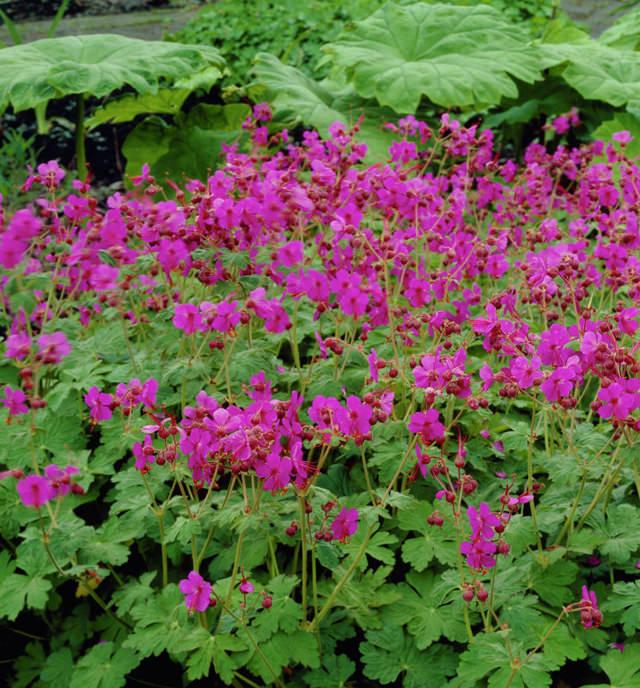
This old fashioned tough and aggressive perennial ground cover is a good choice for gardeners who want to grow low maintenance plants. The plant barely grows up to 1-1.5 feet tall and loves the sun. Blooms appear when the weather warms up in colors like pink, red or pale pink with interesting variegated foliage. You can also plant it in groups under the trees, the bigroot geranium is a drought tolerant plant and best grown in temperates under USDA Zones 4 to 8b.
2. Spotted Dead Nettle
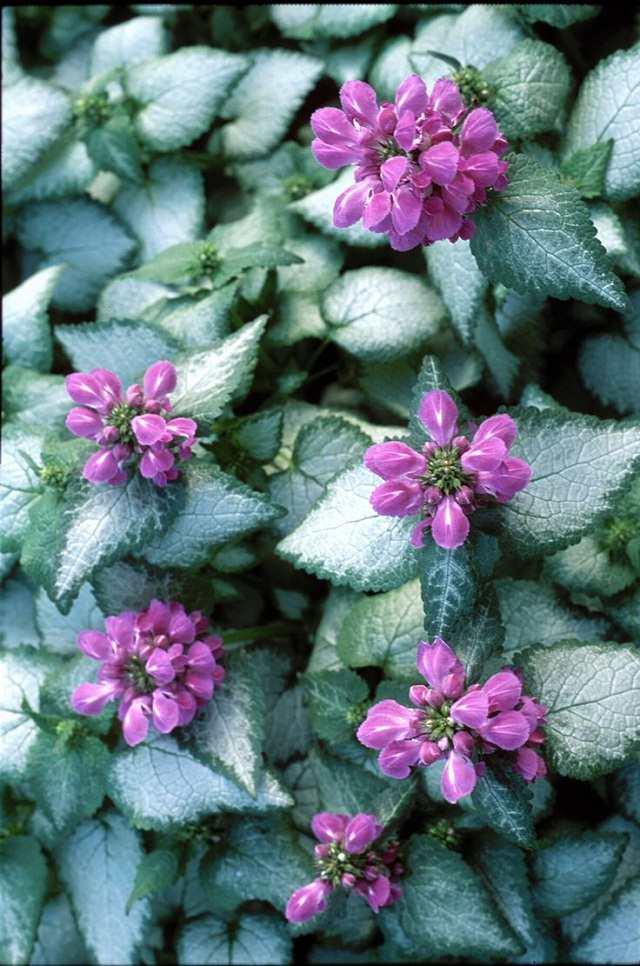
Dead nettle (Lamium maculatum) is notable for both its variegated foliage and its dense clusters of flowers, which appear in a variety of colors, including white, pink and purple (depending on the cultivar). This low growing plant can be grown diversely in different climates (USDA Zones 3-10), providing it cool, moist soil and shade to part shade. However, it must be noted that dead nettle can be invasive and considered as a weed by many gardeners.
3. Moss Rose (Portulaca)

This pretty little plant with needle-like foliage and tiny colorful flowers looks absolutely stunning. It is an annual or perennial (*in warm tropical and subtropical climates) ground cover that spreads densely. The blooms come in yellow, pink, red, white, orange and many more colors. Moss rose is very tolerant of poor conditions and dry soil.
4. Helianthemum

Also called ‘Sun Rose’ or ‘Rock Rose’, this subshrub comes from the family Cistaceae and barely grows up to 1 feet tall. Providing a well-drained soil and full sun (part shade in warmer climates) it blooms happily. The showy flowers of this genus come in shades of orange, pink, yellow, scarlet, and white. There are some varieties available that bloom for a long time from spring to fall (autumn). Grows in USDA Zones 5-9, this plant usually dies back in the colder regions when the winter perks up, whereas in warmer zones it remains evergreen.
5. Lilyturf (Liriope)

Lilyturf is neither a grass nor a lily. This showy and tough groundcover has lush and deep green, grass-like foliage ordered in slightly upright tufts. Spikes of violet or lavender color flowers appear from late summer until the fall.
Lilyturf (USDA Zones 6-10) requires full sun in colder regions but in warm subtropical or tropical climate, you can grow it in dappled shade. It can be grown between tall shrubs and underneath the canopy of trees, also use it for edging walkways or as and a low border accent. Liriope ‘Muscari’ and Liriope ‘Spicata’ are two most popular varieties.
6. Sweet Woodruff
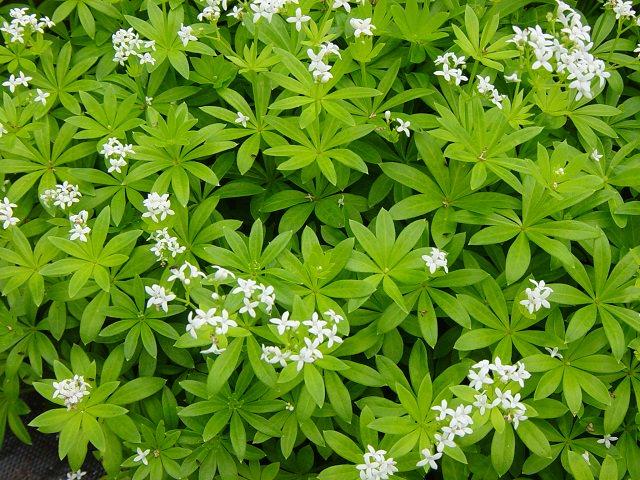
Sweet woodruff is an excellent ground cover if you want to add fragrance to your garden. Grows best in part shade to full shade and on well-drained soil, this plant can grow up to a height of only 8-10 inches (When in bloom). It starts to bloom prolifically from mid-spring, sweet woodruff leaves also release fragrance when crushed.
7. Creeping Thyme

Thymus serpyllum is a low-growing aromatic flowering herb that is perennial and hardy in USDA Zones 4-9. Just like other thyme varieties it is edible too. This tiny plant barely grows up to 3 inches tall. It is deer resistant and an amazing alternative of grasses.
8. Brass Button

If you’re searching for a lawn substitute on which you can set foot without thinking much then consider growing brass button. It also forms yellow-golden flowers that appear from spring to summer. Brass buttons are hardy in USDA Zones 5-10 (but evergreen only in Zone 8-10), growing in temperates to subtropical climates both.
9. Creeping Phlox
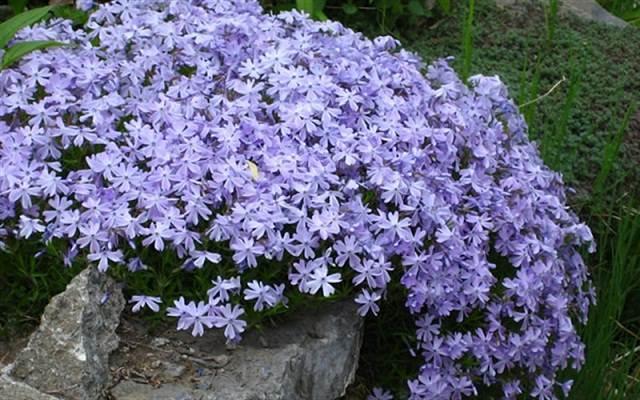
This ground cover has pleasant flowers that appear in pastel hues. Growing this sturdy, low-maintenance plant is possible in USDA Zones 3-8, it is the plant that can be used in landscaping to hide the unsightly slope or other difficult areas as it rambles between rocks or cascades down. It can also be used as a bordering plant around the flowerbeds.
10. Sedum

The genus ‘Sedum’ has a diverse group of ornamental succulent plants, you can grow low growing sedums as a ground cover in full sun and well-drained soil. Yellow flowers appear in summer. The best thing about sedums is there are about 400 species of them around the world that can be grown diversely in every climate.
11. Campanula Portenschlagiana

Campanula portenschlagiana or ‘Dalmatian Bellflower’ is a beautiful annual or perennial plant that forms a mat of small rounded leaves. The flowers are star-shaped, blue-purple in color that blooms from spring through summer. Relatively cold hardy but requires shelter when temperature dips below much. It grows in full sun and in the part shade too, on a fairly loose, well drained and alkaline soil.
12. Lily of the Valley

Lily of the Valley is one of the easiest and best flowering ground covers. Its fragrant little bell-shaped white flowers grow well in shade and have long blooming period. Growing lily of the valley plant is possible in cool temperate zones in USDA Zones 2-9.
13. Vinca minor
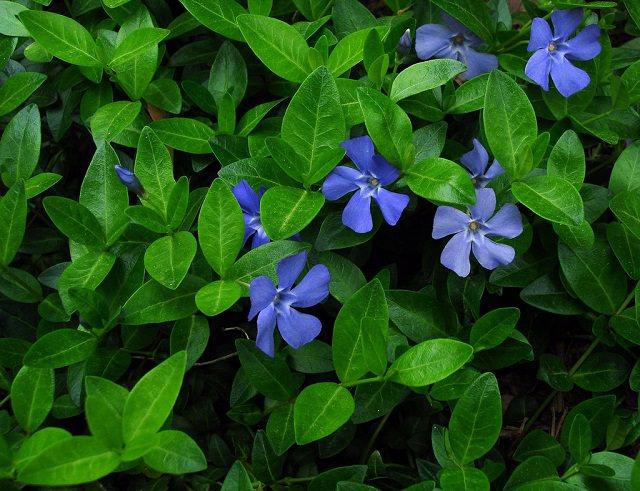
One of the most popular groundcovers, it is a hardy plant in both cold and warm climates under USDA Zones 4-10a that spreads quickly. It blooms prolifically, is easy to grow and tolerates poor soil and drought. Provide it full sun in the cold climate and part shade in warm climates.
14. Veronica ‘Goodness Grows’

This low growing beautiful perennial blooms from summer to fall. Good for country style or cottage style garden and also suitable for containers. With its spiky blue blooms, it looks good with bright green foliage. Veronica ‘Goodness Grows’ requires full sun and regular but moderate watering.
15. Firecracker (Russelia equisetiformis)
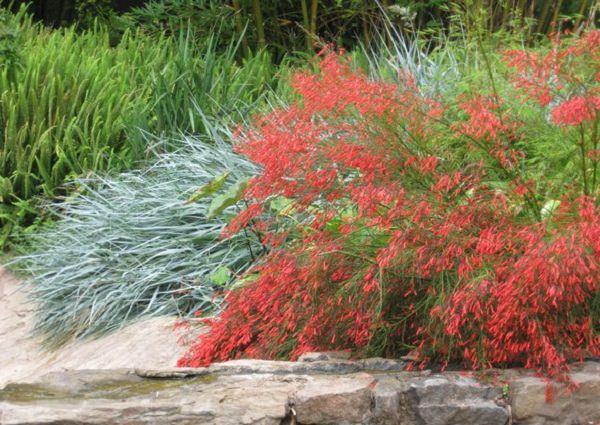
A warm climate plant that grows best in warm temperates, subtropics, and tropics (USDA Zones 8b-11). This drought tolerant plant is loved by nectar-feeding species of birds, and by butterflies. Fluffy, errant and wispy stems and foliage cascade down and camouflages the unsightly areas. It is suitable for slopes, borders, retaining walls and containers too.
16. Lamb’s Ear

One of the best flowering ground cover plants on our list due to its thick attractive silver-grey-green foliage that forms gentle and velvety rosettes, not only the foliage, its purple colored flowers that appear from late spring are appealing too. This excellent edging plant only grows up 12 inches tall in part sun to full sun under USDA Zones 4-9.
17. Society Garlic

Society garlic (Tulbaghia violacea) is also known as ‘Pink agapanthus’. With its edible garlic-flavored purple flowers and clump forming grass like blue-grey foliage, this tough and low maintenance ground cover is a good option for those who live in warmer climates. Suitable for warm temperates, subtropics and tropics under USDA Zones 7-11.
18. Ajuga

Ajuga, which is also called ‘Bugleweed’ is a genus of perennial or annual flowering plants. It becomes an excellent ground cover, sometimes invasive. Many of its species are very popular, especially ‘Ajuga reptans’ that spread through its runners, having attractive foliage that forms a dense carpet-like mat and deep blue flower spikes. It is possible to grow ajuga in both cold and warm climates (USDA Zones, 3-10).

This old fashioned tough and aggressive perennial ground cover is a good choice for gardeners who want to grow low maintenance plants. The plant barely grows up to 1-1.5 feet tall and loves the sun. Blooms appear when the weather warms up in colors like pink, red or pale pink with interesting variegated foliage. You can also plant it in groups under the trees, the bigroot geranium is a drought tolerant plant and best grown in temperates under USDA Zones 4 to 8b.
2. Spotted Dead Nettle

Dead nettle (Lamium maculatum) is notable for both its variegated foliage and its dense clusters of flowers, which appear in a variety of colors, including white, pink and purple (depending on the cultivar). This low growing plant can be grown diversely in different climates (USDA Zones 3-10), providing it cool, moist soil and shade to part shade. However, it must be noted that dead nettle can be invasive and considered as a weed by many gardeners.
3. Moss Rose (Portulaca)

This pretty little plant with needle-like foliage and tiny colorful flowers looks absolutely stunning. It is an annual or perennial (*in warm tropical and subtropical climates) ground cover that spreads densely. The blooms come in yellow, pink, red, white, orange and many more colors. Moss rose is very tolerant of poor conditions and dry soil.
4. Helianthemum

Also called ‘Sun Rose’ or ‘Rock Rose’, this subshrub comes from the family Cistaceae and barely grows up to 1 feet tall. Providing a well-drained soil and full sun (part shade in warmer climates) it blooms happily. The showy flowers of this genus come in shades of orange, pink, yellow, scarlet, and white. There are some varieties available that bloom for a long time from spring to fall (autumn). Grows in USDA Zones 5-9, this plant usually dies back in the colder regions when the winter perks up, whereas in warmer zones it remains evergreen.
5. Lilyturf (Liriope)

Lilyturf is neither a grass nor a lily. This showy and tough groundcover has lush and deep green, grass-like foliage ordered in slightly upright tufts. Spikes of violet or lavender color flowers appear from late summer until the fall.
Lilyturf (USDA Zones 6-10) requires full sun in colder regions but in warm subtropical or tropical climate, you can grow it in dappled shade. It can be grown between tall shrubs and underneath the canopy of trees, also use it for edging walkways or as and a low border accent. Liriope ‘Muscari’ and Liriope ‘Spicata’ are two most popular varieties.
6. Sweet Woodruff

Sweet woodruff is an excellent ground cover if you want to add fragrance to your garden. Grows best in part shade to full shade and on well-drained soil, this plant can grow up to a height of only 8-10 inches (When in bloom). It starts to bloom prolifically from mid-spring, sweet woodruff leaves also release fragrance when crushed.
7. Creeping Thyme

Thymus serpyllum is a low-growing aromatic flowering herb that is perennial and hardy in USDA Zones 4-9. Just like other thyme varieties it is edible too. This tiny plant barely grows up to 3 inches tall. It is deer resistant and an amazing alternative of grasses.
8. Brass Button

If you’re searching for a lawn substitute on which you can set foot without thinking much then consider growing brass button. It also forms yellow-golden flowers that appear from spring to summer. Brass buttons are hardy in USDA Zones 5-10 (but evergreen only in Zone 8-10), growing in temperates to subtropical climates both.
9. Creeping Phlox

This ground cover has pleasant flowers that appear in pastel hues. Growing this sturdy, low-maintenance plant is possible in USDA Zones 3-8, it is the plant that can be used in landscaping to hide the unsightly slope or other difficult areas as it rambles between rocks or cascades down. It can also be used as a bordering plant around the flowerbeds.
10. Sedum

The genus ‘Sedum’ has a diverse group of ornamental succulent plants, you can grow low growing sedums as a ground cover in full sun and well-drained soil. Yellow flowers appear in summer. The best thing about sedums is there are about 400 species of them around the world that can be grown diversely in every climate.
11. Campanula Portenschlagiana

Campanula portenschlagiana or ‘Dalmatian Bellflower’ is a beautiful annual or perennial plant that forms a mat of small rounded leaves. The flowers are star-shaped, blue-purple in color that blooms from spring through summer. Relatively cold hardy but requires shelter when temperature dips below much. It grows in full sun and in the part shade too, on a fairly loose, well drained and alkaline soil.
12. Lily of the Valley

Lily of the Valley is one of the easiest and best flowering ground covers. Its fragrant little bell-shaped white flowers grow well in shade and have long blooming period. Growing lily of the valley plant is possible in cool temperate zones in USDA Zones 2-9.
13. Vinca minor

One of the most popular groundcovers, it is a hardy plant in both cold and warm climates under USDA Zones 4-10a that spreads quickly. It blooms prolifically, is easy to grow and tolerates poor soil and drought. Provide it full sun in the cold climate and part shade in warm climates.
14. Veronica ‘Goodness Grows’

This low growing beautiful perennial blooms from summer to fall. Good for country style or cottage style garden and also suitable for containers. With its spiky blue blooms, it looks good with bright green foliage. Veronica ‘Goodness Grows’ requires full sun and regular but moderate watering.
15. Firecracker (Russelia equisetiformis)

A warm climate plant that grows best in warm temperates, subtropics, and tropics (USDA Zones 8b-11). This drought tolerant plant is loved by nectar-feeding species of birds, and by butterflies. Fluffy, errant and wispy stems and foliage cascade down and camouflages the unsightly areas. It is suitable for slopes, borders, retaining walls and containers too.
16. Lamb’s Ear

One of the best flowering ground cover plants on our list due to its thick attractive silver-grey-green foliage that forms gentle and velvety rosettes, not only the foliage, its purple colored flowers that appear from late spring are appealing too. This excellent edging plant only grows up 12 inches tall in part sun to full sun under USDA Zones 4-9.
17. Society Garlic

Society garlic (Tulbaghia violacea) is also known as ‘Pink agapanthus’. With its edible garlic-flavored purple flowers and clump forming grass like blue-grey foliage, this tough and low maintenance ground cover is a good option for those who live in warmer climates. Suitable for warm temperates, subtropics and tropics under USDA Zones 7-11.
18. Ajuga

Ajuga, which is also called ‘Bugleweed’ is a genus of perennial or annual flowering plants. It becomes an excellent ground cover, sometimes invasive. Many of its species are very popular, especially ‘Ajuga reptans’ that spread through its runners, having attractive foliage that forms a dense carpet-like mat and deep blue flower spikes. It is possible to grow ajuga in both cold and warm climates (USDA Zones, 3-10).
1
0
文章
智人
2017年05月22日
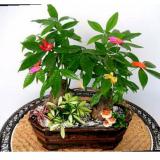
#小琴丝竹 又称花孝顺竹 ,属:禾本科、孝顺竹属 、丛生竹;丛生竹,秆高2-8m,径1-4cm。新秆浅红色,老秆金黄色,并不规则间有绿色纵条纹。分布于:长江以南各省。
丛态优美且秆色秀丽,为庭园观赏或盆栽的上佳材料。小琴丝竹为孝顺竹的变种,其区别在于秆与枝金黄色,并间有粗细不等的纵条纹,初夏出笋不久,竹箨脱落,秆呈鲜黄色,在阳光照耀下显示鲜红色。为著名的观赏竹品种,分布范围与孝顺竹相同。

#养护方法:
1.水分:盆栽竹管理中水分管理很重要。竹子喜湿润,怕积水。装盆后第一次水要浇透,以后保持盆土湿润,“干透浇透”,不可浇水过多,否则易烂鞭烂根。从装盆至成活阶段还要经常向叶片喷水。如果盆土缺水,竹叶会卷曲,此时,应及时浇水,则竹叶又会展开。夏天平均1天至2天要浇水一次,冬天浇水少,但要保证盆土湿润,以防“干冻”。
2.肥料:盆栽竹肥料主要以装盆时拌入盆土中的有机肥为主,竹子成活后适当追肥,薄肥勤施,在春夏可水施复合肥。
3.病虫防治:盆栽竹子虫害主要有竹蚜虫、竹介壳虫等,可用杀虫剂喷洒。病害主要有煤污病、丛枝病等,应加强管理,及时修剪病株。
4.其他:盛夏高温季节,应把盆栽竹移至阴凉处,避免烈日暴晒,大棚要覆盖遮阴网,还需经常向叶片喷水,保持竹子叶色翠绿。到严寒冬季,须将盆栽竹移至背风向阳处或室内,大棚用塑料薄膜覆盖保温。
丛态优美且秆色秀丽,为庭园观赏或盆栽的上佳材料。小琴丝竹为孝顺竹的变种,其区别在于秆与枝金黄色,并间有粗细不等的纵条纹,初夏出笋不久,竹箨脱落,秆呈鲜黄色,在阳光照耀下显示鲜红色。为著名的观赏竹品种,分布范围与孝顺竹相同。

#养护方法:
1.水分:盆栽竹管理中水分管理很重要。竹子喜湿润,怕积水。装盆后第一次水要浇透,以后保持盆土湿润,“干透浇透”,不可浇水过多,否则易烂鞭烂根。从装盆至成活阶段还要经常向叶片喷水。如果盆土缺水,竹叶会卷曲,此时,应及时浇水,则竹叶又会展开。夏天平均1天至2天要浇水一次,冬天浇水少,但要保证盆土湿润,以防“干冻”。
2.肥料:盆栽竹肥料主要以装盆时拌入盆土中的有机肥为主,竹子成活后适当追肥,薄肥勤施,在春夏可水施复合肥。
3.病虫防治:盆栽竹子虫害主要有竹蚜虫、竹介壳虫等,可用杀虫剂喷洒。病害主要有煤污病、丛枝病等,应加强管理,及时修剪病株。
4.其他:盛夏高温季节,应把盆栽竹移至阴凉处,避免烈日暴晒,大棚要覆盖遮阴网,还需经常向叶片喷水,保持竹子叶色翠绿。到严寒冬季,须将盆栽竹移至背风向阳处或室内,大棚用塑料薄膜覆盖保温。
0
0
文章
笼岛 みどり
2017年05月22日


7月20日の誕生花
7月20日の誕生花は、「ひまわり(向日葵)」です。北アメリカが原産のキク科の1年草で、野生のものは60種ほどあると言われています。7~9月に茎先に20~30㎝ほどの、黄色の大きな花を横向きに咲かせます。
ひまわり(向日葵)について科・属 キク科ヒマワリ属和名向日葵(ヒマワリ)英名 Sunflower学名 Helianthus annuus原産地 北アメリカ開花時期 6月~8月
ひまわり(向日葵)の花言葉と由来
ひまわり(向日葵)の花言葉は、「あこがれ」「あなただけを見つめる」「敬慕」。
ひまわりは、太陽が移動することによってひまわりも花の向きが変わるということから、「日廻り(ひまわり)」と呼ばれていました。学名の「Helianthus」には「太陽の花」という意味があります。
「向日葵」は、ひまわりの花に向日性があることからつけられた「向日」に、「太陽に向かって成長する植物」という意味のある「葵」がつき、「向日葵」とかいて「ひまわり」と呼ばれるようになりました。
花言葉の、「あなただけを見つめる」「あこがれ」は、成長期の頃の花が太陽の動きに合わせるように向きを変えるところから来ています。「敬慕」は、ギリシャ神話の海の精クリティのアポロンへの気持ちを表したと言われています。

ひまわり(向日葵)の種
ひまわりの種は、1.5cmくらいの大きさで、1輪につき500個から3000個ほどの種が出来ます。ひまわりの種といえばハムスターが食べるイメージがありますが、とても栄養が豊富で海外では食用としても人気があります。日本でも、炒って殻が取り除かれたものが販売されています。
ひまわりの種には、リノール酸、葉酸、ビタミン、鉄分、繊維、亜鉛、マグネシウム、カルシウムなどが豊富に含まれていて、とても栄養価が高く、アメリカなどでは長寿や若返りのナッツとして知られているようです。しかし、ナッツは高カロリーなので食べすぎには注意です。
ギリシャ神話のひまわり(向日葵)
ゼウスの息子の太陽神アポロンはまばゆい金髪と美しい顔をもち、類い稀なる竪琴と笛の名手でした。水の精クリュティエは、アポロンに恋こがれますが、叶わぬ恋になってしまいます。それが悲しくてクリュティエは泣いてばかりでした。
クリュティエは、日輪車で東の空に昇ってくるアポロンを待ちつづけ、現れてから西の空に見えなくなるまで目で追い続けました。クリュティエは9日9晩アポロンを見続け、そうしているうちに足は地面に根付き、顔はひまわりの花に変化してしまったといわれています。

他の花言葉の記事はここから探してみよう。LOVEGREEN 花言葉記事一覧
0
0
文章
Rainbow
2017年05月22日

其实要写好一篇《#吊竹梅 的养殖方法和注意事项》难点不是一些技术要点,而是一些在养护过程中实际遇到的问题,对于花友来说对经验的获取比理论知识更为有用。

1、吊竹梅的养殖方法
吊竹梅是一种为多年生观叶草本植物,在光照充足的时候叶子会呈现紫绿色,如果在全阴的环境下养护叶子就会比较绿(有绿叶品种,也有紫色品种,光照改变颜色是相对而言)。
下面说一些重点,有关养护环境,吊竹梅适合在阴凉的地方养护,夏季不能暴晒,要适当遮阴,平时要注意保湿,多给予一些水,吊竹梅能忍耐8℃的低温,不耐寒,怕炎热,14℃以上可正常生长,要求较高的空气湿度,在干燥的空气中叶片常干尖焦边,不耐旱而耐水湿,对土壤的酸碱度要求不严。
简单的说就是把吊竹梅放在客厅或者北阳台及其他明亮的散光下就可以正常养护,很简单的。
至于浇水、施肥这些,平日里可以多给浇水,盆土保持潮湿就可以了,至于施肥,如果有条件可以多给予一些观叶肥,这样吊竹梅会长势更旺盛。
有关吊竹梅的繁殖,就更简单了,随便剪枝条然后扦插即可,无论是想枝条插在被子里水培,还是插在土里生根,都很简单,试试就知道了。
2、吊竹梅注意事项
1)注意防寒,养护环境最低温度不要低于88℃。
2)不要迷恋老蔓,有的花友喜欢一盆花养好多年,对于这类草本植物,有适当改变这种观点,吊竹梅是匍匐生植物,每个枝条都有生根的点,所以要适当多扦插繁殖。不然就会发生靠近根部的枝条没有叶子的尴尬情况。
3、吊竹梅开花吗?
吊竹梅是开花的,只不过不太容易开花而已,适当多给予一些阳光,还是可以开花的,下面是一位花友的吊竹梅开花图片。


1、吊竹梅的养殖方法
吊竹梅是一种为多年生观叶草本植物,在光照充足的时候叶子会呈现紫绿色,如果在全阴的环境下养护叶子就会比较绿(有绿叶品种,也有紫色品种,光照改变颜色是相对而言)。
下面说一些重点,有关养护环境,吊竹梅适合在阴凉的地方养护,夏季不能暴晒,要适当遮阴,平时要注意保湿,多给予一些水,吊竹梅能忍耐8℃的低温,不耐寒,怕炎热,14℃以上可正常生长,要求较高的空气湿度,在干燥的空气中叶片常干尖焦边,不耐旱而耐水湿,对土壤的酸碱度要求不严。
简单的说就是把吊竹梅放在客厅或者北阳台及其他明亮的散光下就可以正常养护,很简单的。
至于浇水、施肥这些,平日里可以多给浇水,盆土保持潮湿就可以了,至于施肥,如果有条件可以多给予一些观叶肥,这样吊竹梅会长势更旺盛。
有关吊竹梅的繁殖,就更简单了,随便剪枝条然后扦插即可,无论是想枝条插在被子里水培,还是插在土里生根,都很简单,试试就知道了。
2、吊竹梅注意事项
1)注意防寒,养护环境最低温度不要低于88℃。
2)不要迷恋老蔓,有的花友喜欢一盆花养好多年,对于这类草本植物,有适当改变这种观点,吊竹梅是匍匐生植物,每个枝条都有生根的点,所以要适当多扦插繁殖。不然就会发生靠近根部的枝条没有叶子的尴尬情况。
3、吊竹梅开花吗?
吊竹梅是开花的,只不过不太容易开花而已,适当多给予一些阳光,还是可以开花的,下面是一位花友的吊竹梅开花图片。

2
3
文章
木木
2017年05月22日

1、 多肉植物为什么会#休眠 ?
在其他文章中提到了一些,主要是植物抵抗恶劣环境的自然手段,多数多肉植物原产地气候和我国气候相差很大,特别是有些原产地冬季温暖、夏季凉爽,或明显干湿季节的变化,它们在原产地往往就有休眠现象,在我国大部分地区栽培时,由于环境气候的因素,完全停滞生长,以消耗体内库存的养分生存,这种现象表现十分明显,就是“休眠”。一些种类,在季节变换时,生长缓慢,在通风和遮阴时候,又出现少量的生长,这类植物称为“半休眠”。

2、 多肉植物进入休眠如何判断?
植物通常表现出:在季节内不生长,外表变化不大,对水肥反应迟钝,萎缩,容易腐烂等现象,一但,气候环境改变(主要是温度变化)就继续生长,这时候,如果不是疾病等因素,就进入休眠状态。
休眠主要依靠栽培经验来判断,在个人种植因素往往有差异,休眠状况也不同,在北方休眠的植物,在南方往往在生长,通风降温或加温加湿,植物也会不休眠。
休眠期,要靠在栽培中不断摸素,提高种植经验,如生石花在江淮地区6月份进入夏休眠,而有些种类曲玉(Lithops pseudotruncatella)和小纹玉(Conophytum wiggettae)夏季不休眠,就是在栽培过程中摸索得到的经验。
但是,往往又会在损失植物时候,才发现,这也是需要大家多多交流的原因之一。
在其他文章中提到了一些,主要是植物抵抗恶劣环境的自然手段,多数多肉植物原产地气候和我国气候相差很大,特别是有些原产地冬季温暖、夏季凉爽,或明显干湿季节的变化,它们在原产地往往就有休眠现象,在我国大部分地区栽培时,由于环境气候的因素,完全停滞生长,以消耗体内库存的养分生存,这种现象表现十分明显,就是“休眠”。一些种类,在季节变换时,生长缓慢,在通风和遮阴时候,又出现少量的生长,这类植物称为“半休眠”。

2、 多肉植物进入休眠如何判断?
植物通常表现出:在季节内不生长,外表变化不大,对水肥反应迟钝,萎缩,容易腐烂等现象,一但,气候环境改变(主要是温度变化)就继续生长,这时候,如果不是疾病等因素,就进入休眠状态。
休眠主要依靠栽培经验来判断,在个人种植因素往往有差异,休眠状况也不同,在北方休眠的植物,在南方往往在生长,通风降温或加温加湿,植物也会不休眠。
休眠期,要靠在栽培中不断摸素,提高种植经验,如生石花在江淮地区6月份进入夏休眠,而有些种类曲玉(Lithops pseudotruncatella)和小纹玉(Conophytum wiggettae)夏季不休眠,就是在栽培过程中摸索得到的经验。
但是,往往又会在损失植物时候,才发现,这也是需要大家多多交流的原因之一。
0
1
文章
Abigal
2017年05月22日

These 13 great edible flowers not only look great but also taste good and rich in nutrients. Start using them to add color and flavor to your food and improve your health.
1. Violet (Pansy)
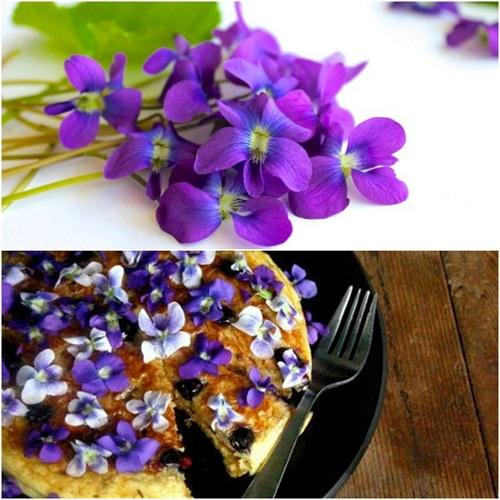
Violets are as satisfying to the eye as they are to the palate, which is the reason they are on our list of great edible flowers. You may have even observed them blended into cocktails and cold drinks. You can also dress up your salad or use it in stuffings or to flavor the desserts.
Learn about the interesting pansy flower recipes here!
They can help with a cough or a headache and are even known to calm pain, especially the esophageal assortment. Violet flowers also purify the blood. Click here to learn more!
2. Chamomile

If you’ve ever sipped a cup of chamomile tea to relax or quiet a resentful stomach, you’re as of now mindful of exactly how relieving chamomile can be. Like dandelion, it’s an individual from the daisy family, and the flower has a flavor that may help you to remember apples. You can chomp on a couple of raw flowers or dry them and utilize them to brew a calming tea.
Learn about the plants you can grow for beauty therapies
Some of its medical advantages incorporate ADHD, relief from bloating, stomach infirmities and insomnia. In any case, the individuals who are allergic to ragweed are encouraged to dodge chamomile.
3. Rose

Among the majority of the edible flowers out there, the rose is a standout amongst the most well-known and it also has great culinary uses. You may also have tasted different foods flavored with rose, for example, rose tea, rose water, rose jelly, rose milk and even rose ice cream.
Take a look at this Indian Rose Milk recipe, it’s too delicious!
Not just culinary uses, roses can also help your body in various ways. Rose hips, which are the base of the flowers, can be utilized to oversee indigestion, arthritis, fevers, urinary issues and constipation. Rose petals are rich in various vitamins and minerals, including vitamins A, E, C, D, and B.
4. Clover flowers

If you consider clover as a weed, you should not! This useful flowering plant has many medicinal and edible uses. The sweet, anise-like taste makes it unique. Serve raw petals in a salad or utilize to make a tea. Brightest and healthiest flowers must be picked; it can taste intense once it begins turning chestnut.
Learn how to grow clover!
Local Americans utilize the flower for cough and cold, and it also helps in a condition like varicose veins known as venous inadequacy. This natural blood purifier is supportive with hot flashes and uterine fibroids. If you want to know more about the clover health benefits, click here.
5. Saffron

Saffron gives a great taste and color to dishes. Also, the saffron is rich in minerals, for example, potassium, calcium, copper, iron, zinc, magnesium, selenium and manganese. It has various vitamins, for example, folic acid, niacin, and vitamins A and C.
It has generally been utilized as an antioxidant, antidepressant, and antiseptic.
6. Tree Peony

Peonies, which is local to China, is more than only a delightful flower to look at. It really conveys with it a large group of healing properties. Peonies can be added into salads or you can boil the petals and make a tea.
It holds a large group of advantages, particularly for those with diabetes or high cholesterol, it also prevents blood clotting. This bloom has one of the highest convergences of phenolic mixes, which are anti-inflammatory and may lessen the risk of heart disease and certain cancers. Click here to learn more!
7. Japanese Honeysuckle
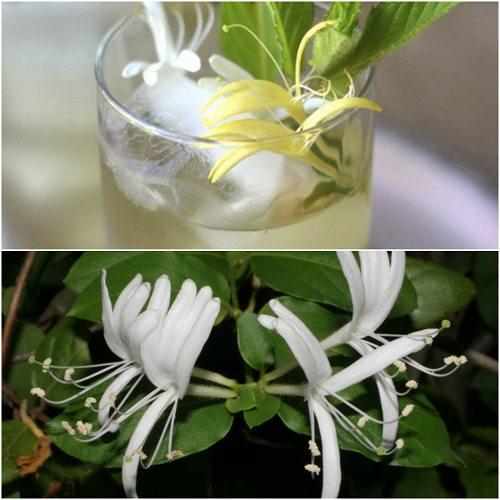
The Japanese honeysuckle grows wild in the U.S. or in many other parts of the world, it’s essential to remember that there are various species of honeysuckle with fluctuating levels of safety and advantages. The yellowish blossom petals of the honeysuckle have sweet nectar-like flavor. Remember that only the blossoms are eatable; the bloom’s dark berries are very noxious so continue with care.
Learn about the 5 recipes that use Honeysuckle flowers as an ingredient!
The blossom has been reported to help with issues, for example, flu, depression, blood impurities, tick bites, infections and even gout. Their cancer prevention properties are well-known too.
8. Marigold (Calendula)

Its (all marigold flowers are edible) merry orange color looks beautiful when it crowns a dish of rice or pasta, and its peppery taste is satisfying in soups and eggs. It can be used in place of saffron.
Calendula is known to heal skin and lessen inflammation, helping wounds, cuts, ulcers and eczema.
9. Nasturtium
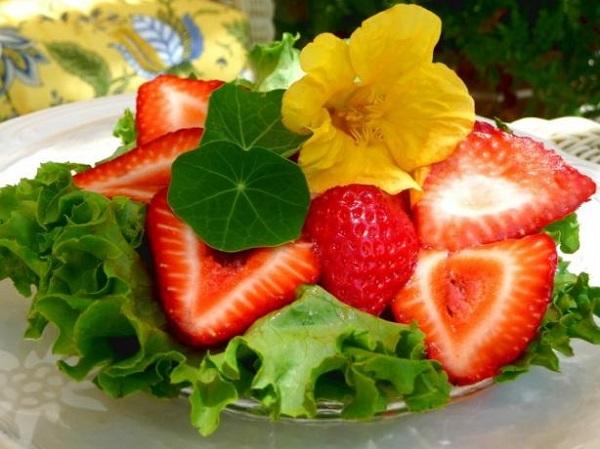
The beautiful, bright, and mildly fragrant nasturtium flowers not only makes your hanging basket charming, you can also pick them fresh to use in salads or garnish your recipes with them to add color. Their mild peppery, sweet, and mustard-like flavor gives a unique taste to the dishes they add into.
Adding nasturtiums to your food not only add color, but they are a good source of Vitamin C and other nutrients. Thus, boosting the immune system and helps in fighting against flu, cough, and cold.
10. Bee Balm

Bee balm is a great medicinal plant. Growing this plant in your garden has many benefits, not only its flowers attract bees and hummingbirds but the entire plant above the ground is edible. Bee Balm leaves and flowers and stems are used in alternative medicine as an antiseptic, carminative, diaphoretic, diuretic and stimulant.
Learn how to grow bee balm here!
The flower petals are a great addition to a fruit salad, you can also steep the flower heads in liquid, strain to make a delicious sorbet or even jam.
11. Lavender

Lavender Cupcakes
Lavender is a great culinary and medicinal herb. Also, it is one of the most used ingredients in cosmetic industries. In all the lavender cultivars, English lavender is most used for culinary purposes due to its sweet fragrance.
Learn how to grow lavender here
Renee’s Garden has a good article on edible and culinary uses of lavender. Click here to read!
12. Jasmine

Jasmine Spritzers
We don’t need to inform you that jasmine is the most fragrant flower in the world. Its intense heady scent is just too good to smell and apart from having many cosmetic uses, jasmine flowers have many edible uses too. Read this informative article to learn about Jasmine flower’s medicinal uses.
Learn about the plants you can grow in your kitchen
In foods, jasmine is used to flavor beverages, frozen dairy desserts, candy, baked goods, gelatins, and puddings. Puddings and dairy desserts with the use of jasmine flowers taste so delicious.
13. Hibiscus

The showy hibiscus blooms are so attractive to look at. If you’re growing this beauty in your garden you already know that. It’s said that all Hibiscus cultivars’ flowers are edible but many hybrid varieties are available so there could be a risk. However, Hibiscus-rosa-Sinensis, Hibiscus sabdiriffa, and other tropical cultivars are edible.
Hibiscus tea is something you can make from hibiscus flowers. It has great effects on health too.
1. Violet (Pansy)

Violets are as satisfying to the eye as they are to the palate, which is the reason they are on our list of great edible flowers. You may have even observed them blended into cocktails and cold drinks. You can also dress up your salad or use it in stuffings or to flavor the desserts.
Learn about the interesting pansy flower recipes here!
They can help with a cough or a headache and are even known to calm pain, especially the esophageal assortment. Violet flowers also purify the blood. Click here to learn more!
2. Chamomile

If you’ve ever sipped a cup of chamomile tea to relax or quiet a resentful stomach, you’re as of now mindful of exactly how relieving chamomile can be. Like dandelion, it’s an individual from the daisy family, and the flower has a flavor that may help you to remember apples. You can chomp on a couple of raw flowers or dry them and utilize them to brew a calming tea.
Learn about the plants you can grow for beauty therapies
Some of its medical advantages incorporate ADHD, relief from bloating, stomach infirmities and insomnia. In any case, the individuals who are allergic to ragweed are encouraged to dodge chamomile.
3. Rose

Among the majority of the edible flowers out there, the rose is a standout amongst the most well-known and it also has great culinary uses. You may also have tasted different foods flavored with rose, for example, rose tea, rose water, rose jelly, rose milk and even rose ice cream.
Take a look at this Indian Rose Milk recipe, it’s too delicious!
Not just culinary uses, roses can also help your body in various ways. Rose hips, which are the base of the flowers, can be utilized to oversee indigestion, arthritis, fevers, urinary issues and constipation. Rose petals are rich in various vitamins and minerals, including vitamins A, E, C, D, and B.
4. Clover flowers

If you consider clover as a weed, you should not! This useful flowering plant has many medicinal and edible uses. The sweet, anise-like taste makes it unique. Serve raw petals in a salad or utilize to make a tea. Brightest and healthiest flowers must be picked; it can taste intense once it begins turning chestnut.
Learn how to grow clover!
Local Americans utilize the flower for cough and cold, and it also helps in a condition like varicose veins known as venous inadequacy. This natural blood purifier is supportive with hot flashes and uterine fibroids. If you want to know more about the clover health benefits, click here.
5. Saffron

Saffron gives a great taste and color to dishes. Also, the saffron is rich in minerals, for example, potassium, calcium, copper, iron, zinc, magnesium, selenium and manganese. It has various vitamins, for example, folic acid, niacin, and vitamins A and C.
It has generally been utilized as an antioxidant, antidepressant, and antiseptic.
6. Tree Peony

Peonies, which is local to China, is more than only a delightful flower to look at. It really conveys with it a large group of healing properties. Peonies can be added into salads or you can boil the petals and make a tea.
It holds a large group of advantages, particularly for those with diabetes or high cholesterol, it also prevents blood clotting. This bloom has one of the highest convergences of phenolic mixes, which are anti-inflammatory and may lessen the risk of heart disease and certain cancers. Click here to learn more!
7. Japanese Honeysuckle

The Japanese honeysuckle grows wild in the U.S. or in many other parts of the world, it’s essential to remember that there are various species of honeysuckle with fluctuating levels of safety and advantages. The yellowish blossom petals of the honeysuckle have sweet nectar-like flavor. Remember that only the blossoms are eatable; the bloom’s dark berries are very noxious so continue with care.
Learn about the 5 recipes that use Honeysuckle flowers as an ingredient!
The blossom has been reported to help with issues, for example, flu, depression, blood impurities, tick bites, infections and even gout. Their cancer prevention properties are well-known too.
8. Marigold (Calendula)

Its (all marigold flowers are edible) merry orange color looks beautiful when it crowns a dish of rice or pasta, and its peppery taste is satisfying in soups and eggs. It can be used in place of saffron.
Calendula is known to heal skin and lessen inflammation, helping wounds, cuts, ulcers and eczema.
9. Nasturtium

The beautiful, bright, and mildly fragrant nasturtium flowers not only makes your hanging basket charming, you can also pick them fresh to use in salads or garnish your recipes with them to add color. Their mild peppery, sweet, and mustard-like flavor gives a unique taste to the dishes they add into.
Adding nasturtiums to your food not only add color, but they are a good source of Vitamin C and other nutrients. Thus, boosting the immune system and helps in fighting against flu, cough, and cold.
10. Bee Balm

Bee balm is a great medicinal plant. Growing this plant in your garden has many benefits, not only its flowers attract bees and hummingbirds but the entire plant above the ground is edible. Bee Balm leaves and flowers and stems are used in alternative medicine as an antiseptic, carminative, diaphoretic, diuretic and stimulant.
Learn how to grow bee balm here!
The flower petals are a great addition to a fruit salad, you can also steep the flower heads in liquid, strain to make a delicious sorbet or even jam.
11. Lavender

Lavender Cupcakes
Lavender is a great culinary and medicinal herb. Also, it is one of the most used ingredients in cosmetic industries. In all the lavender cultivars, English lavender is most used for culinary purposes due to its sweet fragrance.
Learn how to grow lavender here
Renee’s Garden has a good article on edible and culinary uses of lavender. Click here to read!
12. Jasmine

Jasmine Spritzers
We don’t need to inform you that jasmine is the most fragrant flower in the world. Its intense heady scent is just too good to smell and apart from having many cosmetic uses, jasmine flowers have many edible uses too. Read this informative article to learn about Jasmine flower’s medicinal uses.
Learn about the plants you can grow in your kitchen
In foods, jasmine is used to flavor beverages, frozen dairy desserts, candy, baked goods, gelatins, and puddings. Puddings and dairy desserts with the use of jasmine flowers taste so delicious.
13. Hibiscus

The showy hibiscus blooms are so attractive to look at. If you’re growing this beauty in your garden you already know that. It’s said that all Hibiscus cultivars’ flowers are edible but many hybrid varieties are available so there could be a risk. However, Hibiscus-rosa-Sinensis, Hibiscus sabdiriffa, and other tropical cultivars are edible.
Hibiscus tea is something you can make from hibiscus flowers. It has great effects on health too.
0
0




